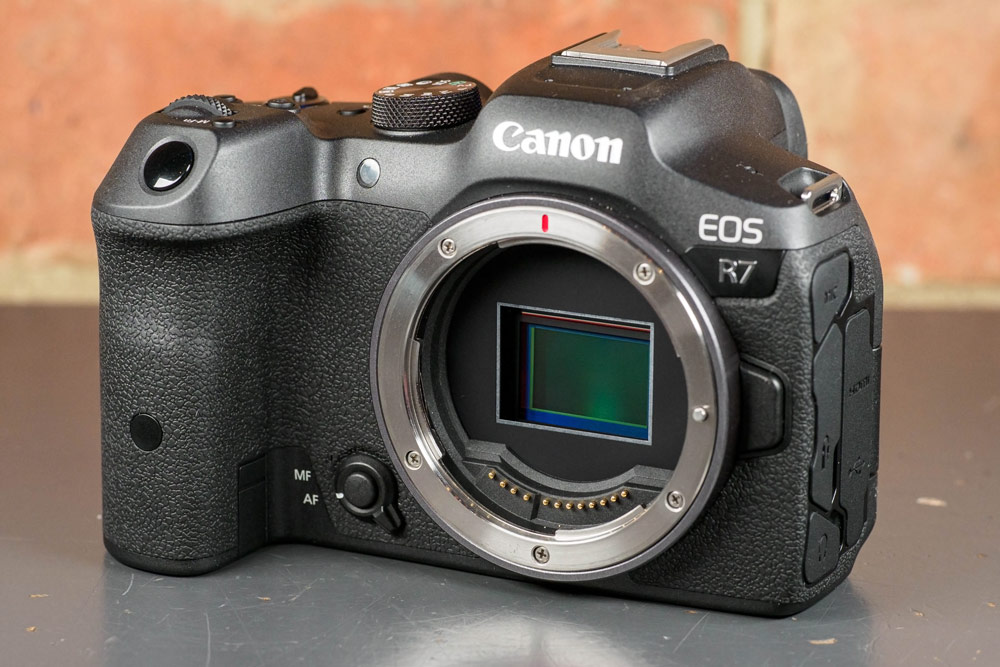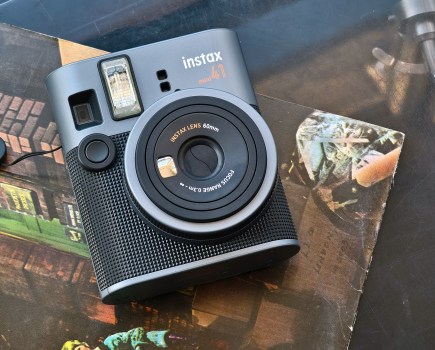Do you need to buy a full-frame camera in 2024, or is an APS-C good enough? A lot has happened recently – some new, higher-resolution APS-C cameras appear to close the gap between them and full-frame cameras. Even some base models have been overhauled by this progress.
For an up-to-date comparison between APS-C and full-frame, Amy Davies explains the key differences and the pros and cons.
The image sensor is the fundamental element of any camera, but with several different sensor sizes available, understanding their differences can be tricky – and thereby how to decide which suits you. Just as bigger negative sizes give better quality with film cameras, the same is true of sensor sizes.
All other things being equal, a full-frame camera will give better quality than an APS-C model. But when you factor in resolution or megapixels, the boundaries become blurred. For example, the Canon EOS R7 (APS-C) has 32.5 megapixels, while the Fujifilm X-H2 and X-T5 (also APS-C) have 40 megapixels, so all three have technically higher resolution than many full frame cameras (typically 24-26MP at this price level).
Key sensor sizes
Probably the two most common sensor sizes you’ll see on the market are full-frame, which is the same sensor size as 35mm film, and the smaller, APS-C format, similar in size to APS-C film. Apart from these two, there are also medium format (larger than full-frame), and Four Thirds (smaller than APS-C), also known as Micro Four Thirds or MFT.
Other than the physical size differences, there are some others to take note of between sensor sizes, which we explore in this piece. We’ll also walk you through the benefits and drawbacks to each sensor size.
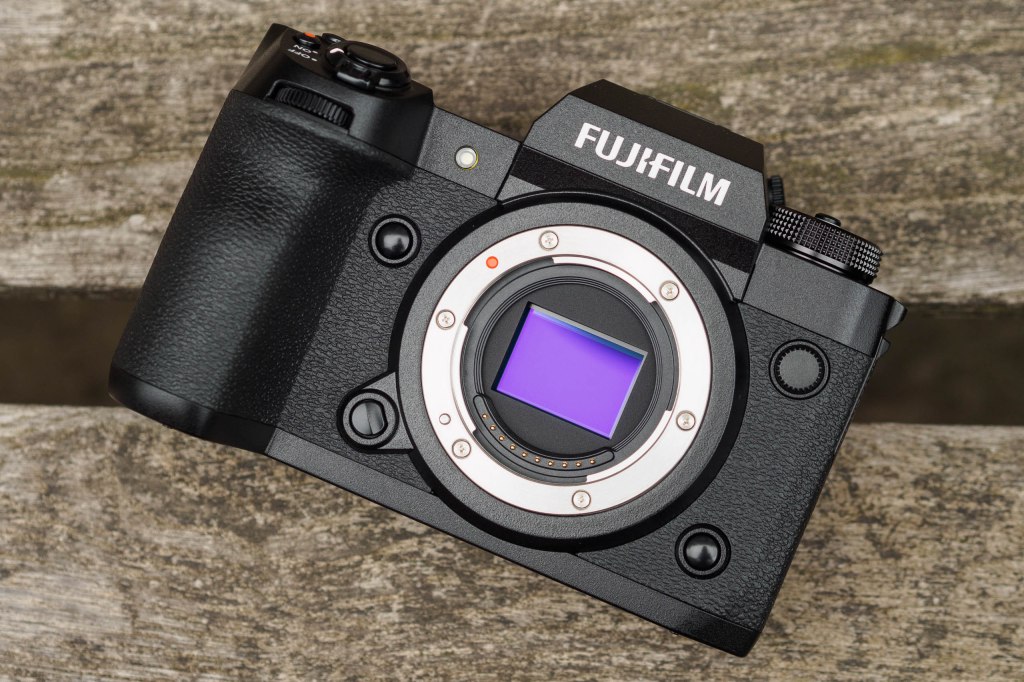
APS-C vs Full-Frame: What’s the difference?
Full-frame sensors measure the same as 35mm film, which is 36 x 24mm. Meanwhile, smaller APS-C sized sensors measure in at either 23.6 x 15.7mm (Nikon, Pentax, Sony, Fujifilm) or 22.2 x 14.8mm (Canon). That makes full-frame about 2.6x larger in terms of total surface area size.
As mentioned, there are also Micro Four Thirds (17.3 x 13mm, MFT), and medium format sizes (43.8 x 32.9mm). Technically, there is a larger ‘medium format’ size close to the 645 film size, but that’s only found in very high-end cameras, so we’ll stick to the ‘smaller’ medium format for this comparison.

Full-frame sensors can be found in the best full-frame mirrorless cameras, as well as many of the best DSLRs. You’ll even occasionally find a full-frame sensor in a high-end compact camera, such as the Leica Q3. Full-frame sensors are used by Canon, Nikon, Sony, Panasonic, Pentax, Sigma and Leica.
You’ll find an APS-C sensor in many of the best mirrorless cameras too, and they’re also commonly used in DSLRs. APS-C sensors are used by Canon, Nikon, Sony, Fujifilm and Pentax. Again, occasionally there are APS-C sensors found in high-end compacts, like the Ricoh GR III.
The physical size differences have both advantages and disadvantages, which we’ll discuss in more detail below.
What is a crop sensor?
You might hear the term crop sensor from time to time, which simply means something that is smaller than full-frame. It’s a term which is most commonly applied to APS-C, but it can also be used to describe even smaller sensors, such as Micro Four Thirds, or even the smaller 1inch sensors that you find in compact cameras and smartphones – though it’s rare to hear those described as such.
The term ‘crop sensor’ comes from the idea that if you put the same lens on both a full frame and an APS-C camera, the smaller sensor in the APS-C camera will effectively ‘crop’ the image area.
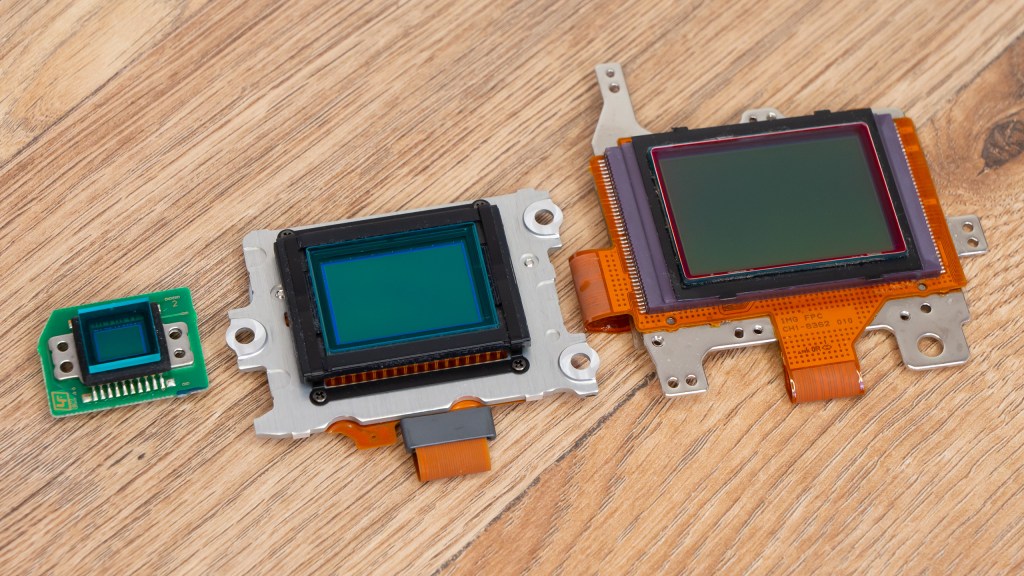
What is a crop factor?
Crop sensors have a crop factor that needs taking into account when using lenses with your camera. With a full-frame camera, the focal length printed on the lens (for example 100mm) is what you’ll get when you shoot with it.
However, when you use a smaller sensor, you’ll need to apply a “crop factor” to get the equivalent focal length. We could talk about lenses in terms of their angle of view; but as focal length has become the prime indicator for angle of view or magnification, we’ll stay with those terms.
Nikon, Fujifilm, Sony and Pentax APS-C sensors have a 1.5x crop factor, while Canon APS-C sensors have a 1.6x crop factor. Therefore, the 100mm lens mentioned above gives you an equivalent of either 150mm or 160mm on an APS-C camera – you simply multiply the focal length by the crop factor for the camera sensor.
Other sensor sizes have different crop factors. A Micro Four Thirds sensor has a 2x crop factor (100mm becomes 200mm), while a one-inch sensor has a 2.7x crop factor (100mm becomes 270mm). It also works with bigger than full-frame sensors too – medium format has a 0.79x crop factor, which would make a 100mm lens equivalent to 79mm.
List of sensor crop factors:
- Medium format = 0.79x
- Full frame = 1x
- APS-C (general) = 1.5x
- APS-C (Canon) = 1.6x
- Four Thirds: 2x
- One inch = 2.7x
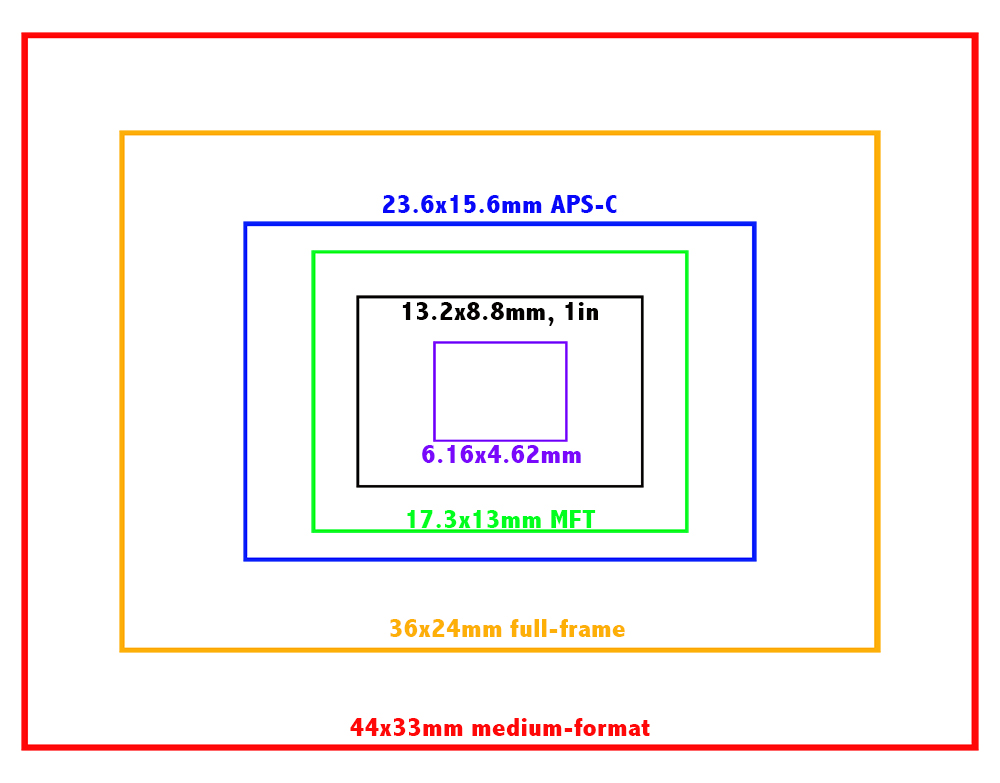
What are the benefits of APS-C?
Regarding image quality, it’s generally true that a bigger sensor equals better performance, with less noise in low light and sometimes better dynamic range – but there are plenty of advantages to APS-C; depending on just what you want from your camera.
One of the big advantages is that APS-C systems are normally smaller and lighter than full-frame equivalents. Often with smaller bodies, and always smaller optics, it’s a good choice when you don’t want to carry heavy gear eg when travelling or hiking long distances.
If you want to shoot handheld, it can be easier to keep smaller and lighter bodies stabilised, too, and in-body-stabilisation (IBIS) systems are generally more effective with smaller sensors; which are easier to move quickly to compensate for any camera movement.
On that note, the crop factor also means that your longer lenses don’t need to be as long, heavy, or expensive as full-frame equivalents to get you closer to the action. That’s why cameras such as the APS-C format Fujifilm X-H2S and the Canon EOS R7 have been pitched strongly as wildlife and action cameras.
Speed is also something that is generally easier to achieve with smaller sensors, especially at affordable prices. Cameras like the Canon EOS R7 offer up to 30fps shooting, and the Olympus OM-1 can shoot at 120fps, in a camera which costs a fraction of the price of similarly speedy models such as the full-frame Nikon Z9 or the Canon EOS R3. That gives ordinary amateur photographers without the big budgets of professionals the chance to capture fast-moving action in a much more affordable fashion.
APS-C vs Full-Frame – Does sensor size matter?
Having a smaller sensor can give other benefits as well, and here’s an example which illustrates the cost and weight advantage of using APS-C, particularly when looking at the whole system, which includes the camera and lenses.
- APS-C system: Fujifilm X-H2S, plus 16-55mm f/2.8 and 100-400mm f/4.5-5.6 costs around $5600 / £5080 and weighs about 2700g.
- Full-frame system: Nikon Z9, plus 24-70mm f/2.8 and 100-400mm f/4.5-5.6 costs around $10600 / £10200, and weighs about 3600g.
In other words, the APS-C system in this comparison costs half as much and weighs almost 1kg less.
To sum up, the main advantages of APS-C cameras are:
- Cheaper
- Faster
- Smaller
- Lighter
APS-C cameras are best for:
- Wildlife photography
- Sports photography
- Travel photography
- Street photography
- Photographers on a budget
What are the benefits of full-frame?
Full-frame is often seen as the “gold standard” for many photographers, with APS-C often thought of being the preserve of enthusiasts and those with a lower budget. While that’s not strictly fair or accurate these days, there are many advantages of using a camera with a larger sensor.
If the best image quality is your main concern, then generally speaking, full-frame will help you achieve that in a wider variety of settings. Low light performance is generally better, as is the dynamic range.
If you crave super high-resolution cameras, you’ll find them with full-frame (and larger sensors). However, the arrivals of the 40MP Fujifilm X-T5 and X-H2 have created a lot of overlap – only a handful of full-frame cameras go higher than these.
Examples include the Sony A1 (50MP), Sony A7R V (61MP) and Sigma fp L (also 61MP). You can go even further with medium format, where the Fujifilm GFX 100S and Hasselblad X2D 100C have 100 megapixel sensors. This generally makes high-resolution full-frame cameras better suited to high-detail photography, as well as giving more flexibility for cropping in post-production, while still maintaining a high pixel count.
It’s easier to achieve a shallow depth of field when using a full-frame sensor. It’s because you use longer focal lengths to achieve the same angles of view, and longer focal lengths produce a shallower depth of field. Although you can achieve the same look when using crop sensors, you might need to get too close to the subject for the same kind of background blur. It’s generally why portrait photographers, for example, prefer to use full-frame.
As for using your lenses, you know exactly what you’re getting (i.e. 100mm = 100mm) with full-frame. That also applies to older / vintage lenses from DSLR or even film days when using them on mirrorless full-frame models.
To sum up, the main advantages of full-frame cameras are:
- Better image quality
- Higher resolution
- Easier shallow depth of field effects
- Straightforward to understand lens focal lengths
Full-frame cameras are best for:
- Landscape photography
- Portrait photography
- Low light photography
- Studio photography
Which should I buy – APS-C Vs Full-Frame?
There’s not necessarily a right or wrong answer when it comes to full-frame vs APS-C and deciding which you should buy. You should think about the types of subjects you like to shoot, the budget you have available, and how much bulk and weight you are prepared to carry around.
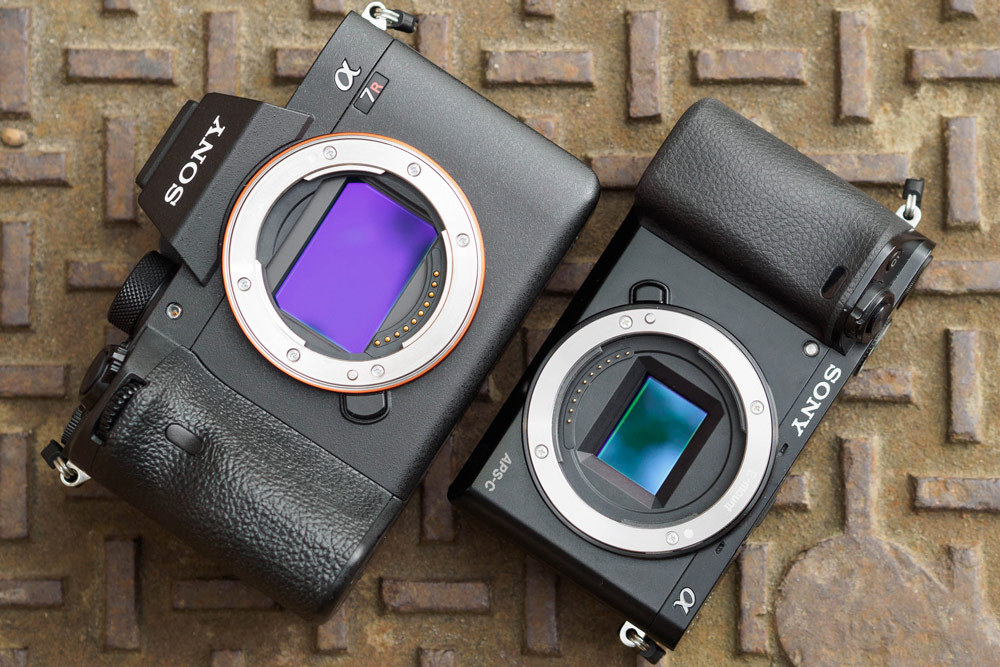
If you’re a landscape photographer, for example, looking for a high-resolution camera which can deliver exceptional dynamic range, and you also want to shoot in low light, then full-frame is the obvious choice. Similarly, if you’re a portrait photographer who wants the best resolution and easy-to-achieve shallow depth of field effects, full-frame is the way to go.
On the other hand, if you’re a wildlife or sports photographer and don’t want to splash out on a super-expensive full-frame camera, but you do want to get close to the action, use fast-frame rates and carry something small and lightweight, then APS-C is probably the more sensible option. Travel photographers who don’t want to unnecessarily weigh themselves down might also choose to opt for APS-C, or Micro Four Thirds for an even smaller system.
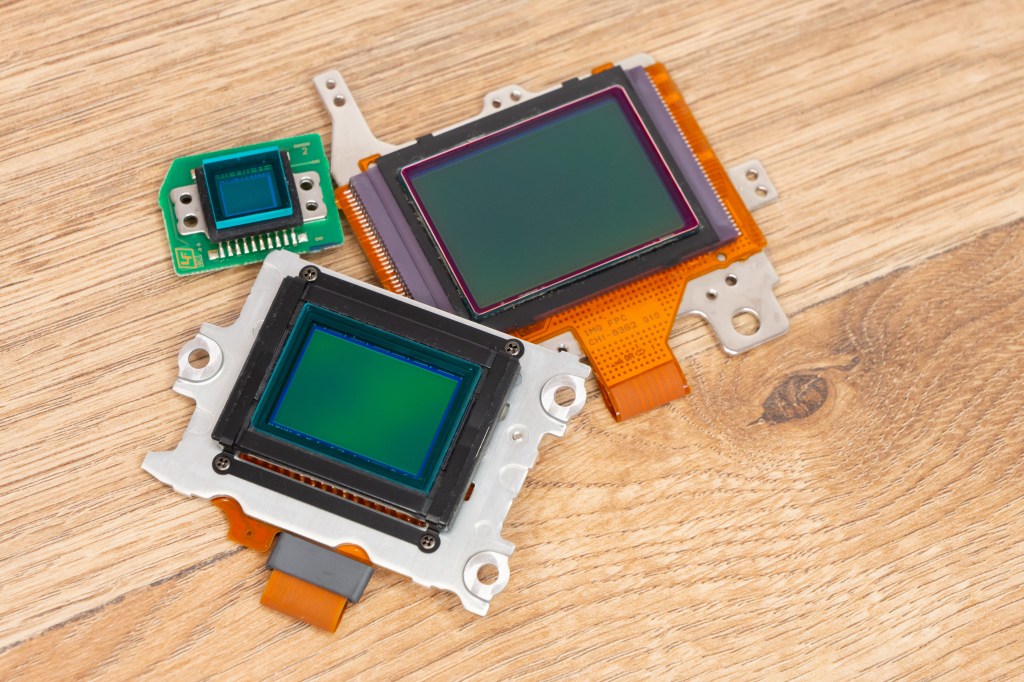
To conclude, the simple truth is that no, not every photographer needs full-frame. While the larger sensor will provide higher image quality in lots of different scenarios, you’ll also have to pay the price for it both in terms of cost and size and weight. For that reason, many will be served just as well, if not better, by choosing a crop camera.
Related reading:
- How to clean your camera sensor – safely and easily
- Micro Four Thirds vs Full-frame for wildlife and nature
For more great guides to cameras, including the best cameras that we think are the best to buy, read our latest buying guides, or the latest reviews.
Follow AP on Facebook, Twitter, Instagram, YouTube and TikTok.


